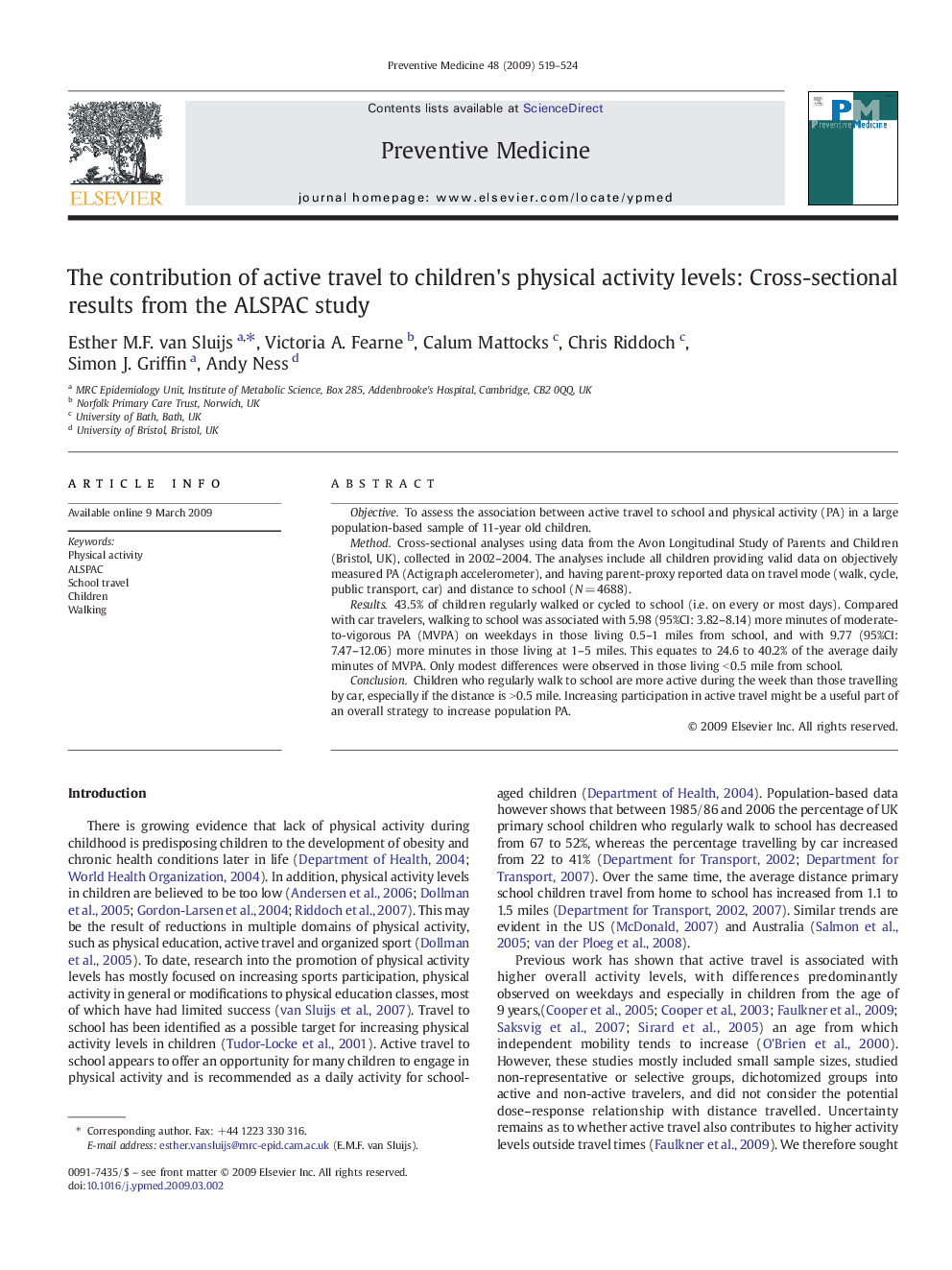| Article ID | Journal | Published Year | Pages | File Type |
|---|---|---|---|---|
| 3101291 | Preventive Medicine | 2009 | 6 Pages |
ObjectiveTo assess the association between active travel to school and physical activity (PA) in a large population-based sample of 11-year old children.MethodCross-sectional analyses using data from the Avon Longitudinal Study of Parents and Children (Bristol, UK), collected in 2002–2004. The analyses include all children providing valid data on objectively measured PA (Actigraph accelerometer), and having parent-proxy reported data on travel mode (walk, cycle, public transport, car) and distance to school (N = 4688).Results43.5% of children regularly walked or cycled to school (i.e. on every or most days). Compared with car travelers, walking to school was associated with 5.98 (95%CI: 3.82–8.14) more minutes of moderate-to-vigorous PA (MVPA) on weekdays in those living 0.5–1 miles from school, and with 9.77 (95%CI: 7.47–12.06) more minutes in those living at 1–5 miles. This equates to 24.6 to 40.2% of the average daily minutes of MVPA. Only modest differences were observed in those living < 0.5 mile from school.ConclusionChildren who regularly walk to school are more active during the week than those travelling by car, especially if the distance is > 0.5 mile. Increasing participation in active travel might be a useful part of an overall strategy to increase population PA.
